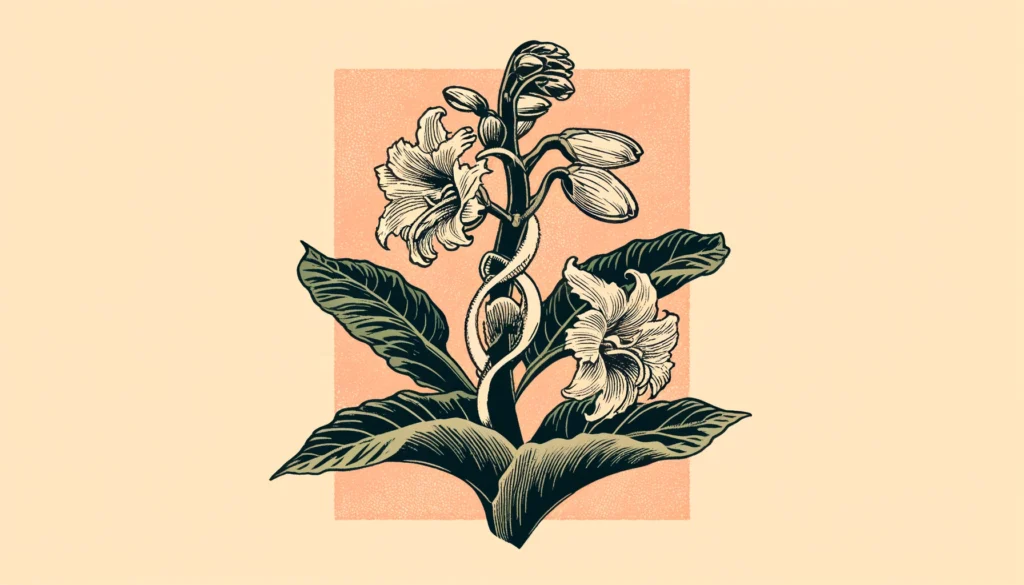

Home » Cat Plants » Can the Adam and Eve Plant be harmful to cats?

The Adam and Eve plant, also known as Arum maculatum, is commonly found in the northeastern and midwestern USA. This plant poses significant risks to cats due to its toxic properties including insoluble calcium oxalate crystals.
Cats ingesting this plant can experience severe symptoms including mouth irritation, excessive drooling, and gastrointestinal distress.
Ingestion may cause mild gastrointestinal upset, but is generally not life-threatening.
Ingestion can result in mild symptoms like vomiting, diarrhea, or drooling. Rarely fatal but may require veterinary care.
Eating these plants can lead to more pronounced symptoms like abdominal pain, lethargy, or difficulty breathing. Veterinary intervention may be necessary.
Ingesting even small amounts can cause severe symptoms like organ damage, seizures, or cardiac failure without rapid treatment.
All parts of these plants are extremely poisonous to cats and can quickly lead to death, even with immediate veterinary care.
** Please note: Please note that toxicity level can vary based on the amount ingested and the specific cat. It's always best to keep these plants completely inaccessible to cats and seek immediate veterinary care or call the poison hotline if you suspect your cat has ingested any part of a toxic plant.
If a cat ingests part of an “Adam and Eve” plant, a veterinarian might diagnose the cat with “arum poisoning.” Here’s what could be involved in that diagnosis:
1. Clinical Symptoms: The initial diagnosis is often based on the observation of symptoms which can include irritation of the mouth and throat, intense burning, excessive drooling, swelling of the mouth, tongue, and lips, vomiting, diarrhea, and difficulty swallowing.
2. History of Exposure: The veterinarian will consider whether there is a known or suspected exposure to the plant. Confirmation from the pet owner that the cat had access to or was seen eating the plant can be crucial.
3. Physical Examination: The vet might notice signs of oral irritation or gastrointestinal distress during a physical exam.
4. Supportive Tests: While there is no specific test for diagnosing arum poisoning, the vet may perform blood work to check for signs of dehydration or electrolyte imbalances if the cat is showing severe symptoms.
5. Treatment Approach: The treatment primarily focuses on supportive care, such as administering fluids to prevent dehydration, pain relief medications, and medications to protect the stomach and intestines. If the cat has recently ingested the plant, the vet might also induce vomiting or administer activated charcoal to reduce the amount of toxin absorbed.

A: Yes, Adam and Eve is toxic to cats. It contains insoluble calcium oxalates, which can cause painful symptoms like oral irritation, drooling, and vomiting if ingested.
A: If a cat eats Adam and Eve, it may experience symptoms like vomiting, difficulty swallowing, and pawing at the mouth. Immediate veterinary care is essential to manage these toxic effects.
A: Yes, all parts of the Adam and Eve plant, including the leaves, stems, and roots, are toxic to cats. These parts contain harmful compounds that can cause serious health issues if ingested.
A: Even small amounts of Adam and Eve can be harmful to cats. Ingesting any part of the plant can result in toxic reactions, so it’s crucial to keep it out of reach of pets.
A: Adam and Eve poisoning in cats is rarely fatal, but it can cause significant discomfort and health problems. Quick treatment is necessary to alleviate symptoms and ensure recovery.
A: If your cat ingests Adam and Eve, contact your veterinarian immediately. Early intervention can reduce the toxic effects and protect your cat’s health.
The Adam-and-Eve plant has a long history dating back to ancient times when its root was highly valued for its starch content. Despite its usefulness, the plant has always required careful handling due to its toxic properties. Over the centuries, this plant has been both cultivated and found wild, primarily in temperate regions. Its name originates from biblical references, reflecting its deep cultural significance.
Please note: The information shared in this post is for informational purposes only and should not be considered as veterinary medical advice.
🐾 A hilarious or heart-melting cat video
🐾 Our latest paws-on review of a cool cat toy